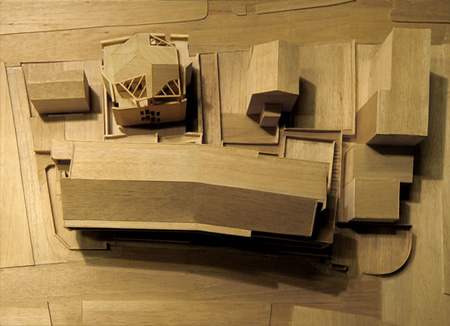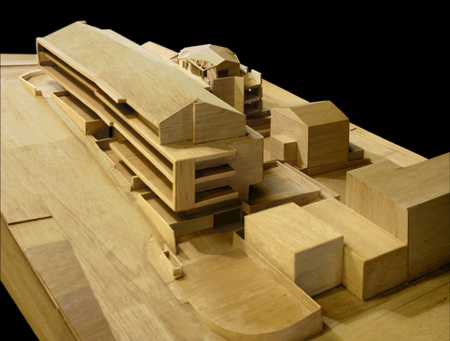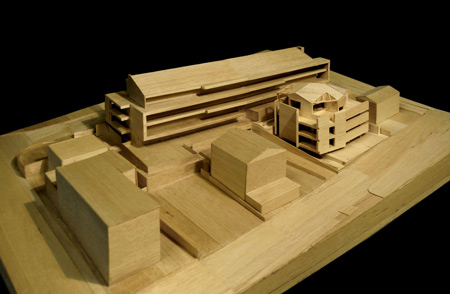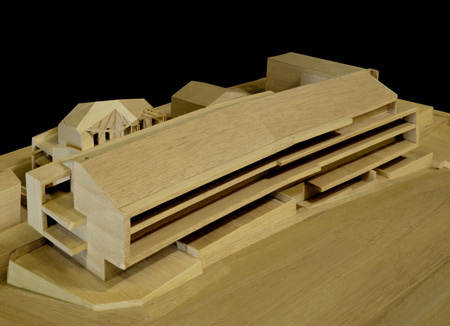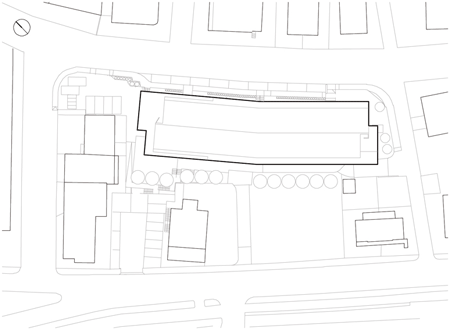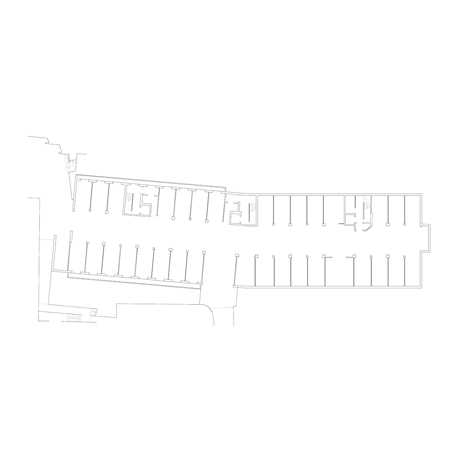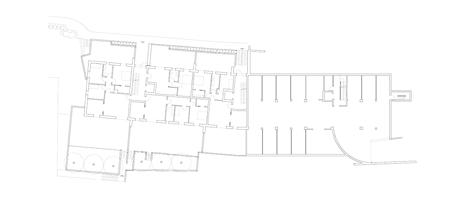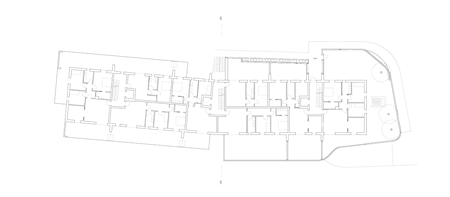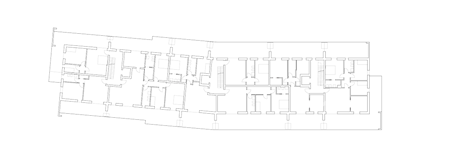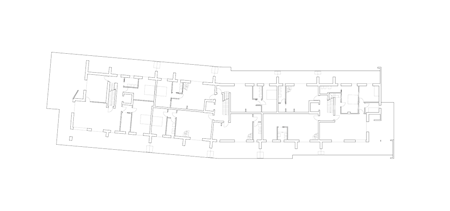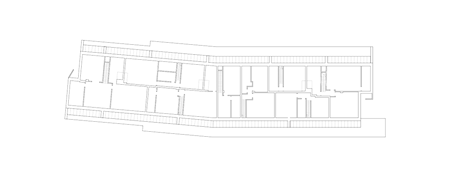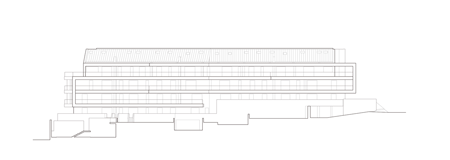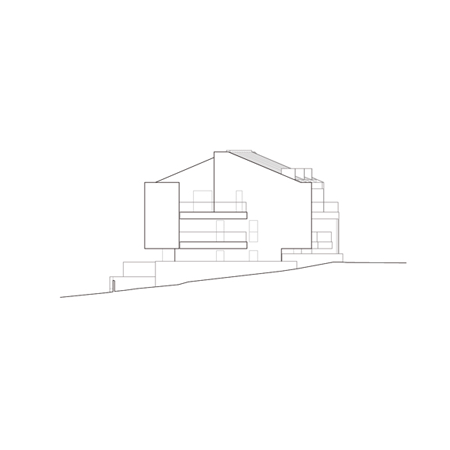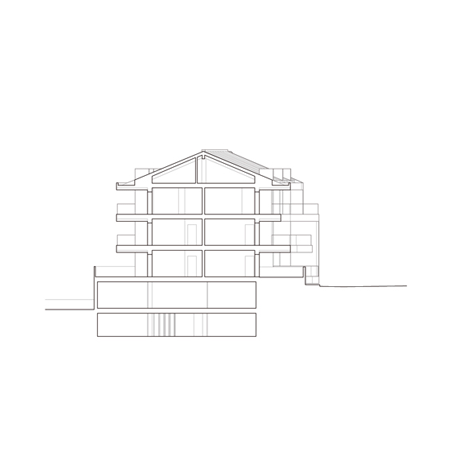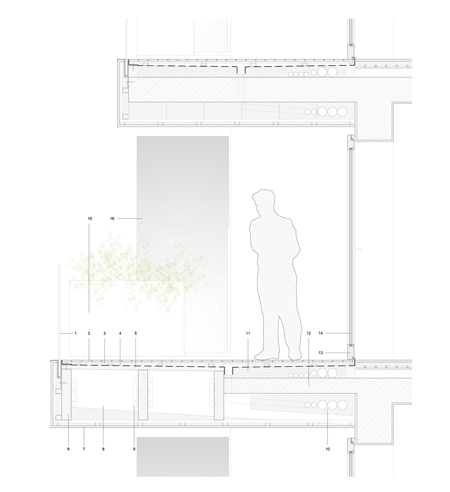
Apartments by Tissellistudioarchitetti
Italian office Tissellistudioarchitetti have completed an apartment block in Cesena, Italy, built in long layers linked by ramps.
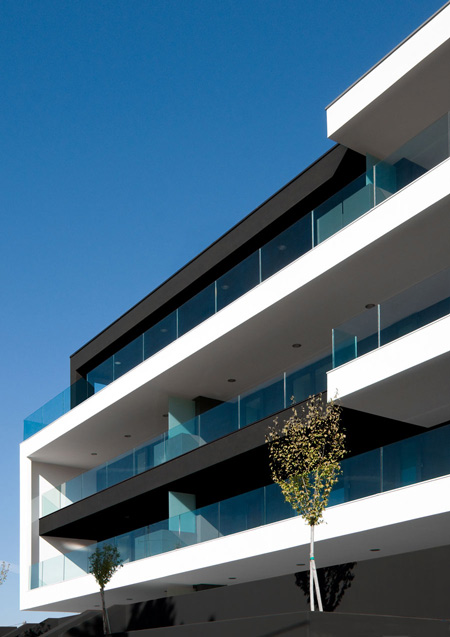
The structure has parking on the ground floor, more parking and outdoor areas on the first floor and 28 residences with deep balconies above that.
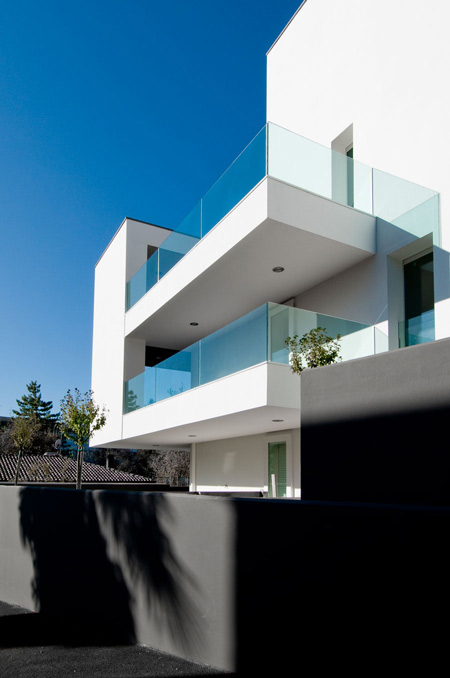
The text below is from Tissellistudioarchitetti:
IN CESENA, A NEW RESIDENTIAL BUILDING FOR 28 APARTMENTS
tissellistudioarchitetti presents his last work: a building for 28 residential units, the first phase of a intervention which expects the realization of two buildings.
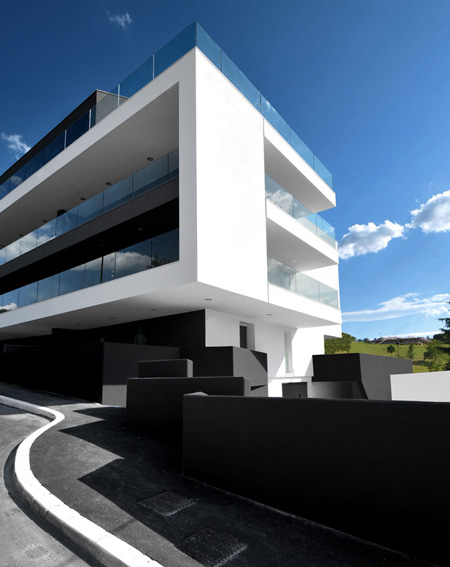
The aim of the project was to revitalize a dismissed industrial area with a residential building.
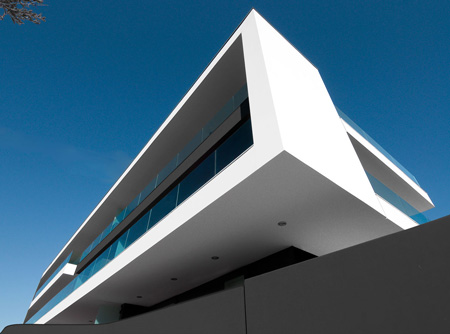
The challenge was to work within the parameters of good design and a low budget to provide the city with quality architecture while respecting the commercial space requirements of the client.
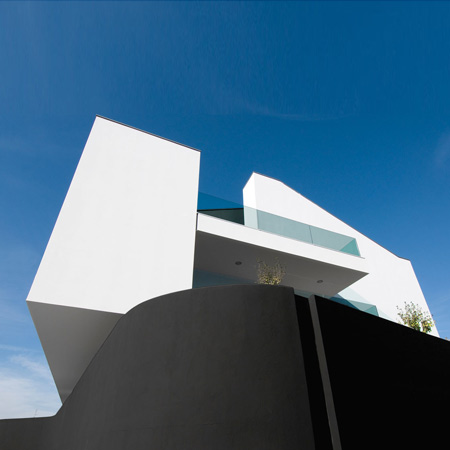
The resulting project provides a substantial architectural impact with respect to the smaller buildings of the area that are characterized by a broad range of building styles.
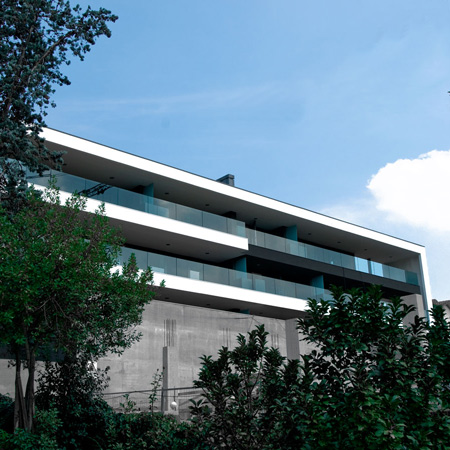
The decision to use a traditional structure allowed the architects to focus their design energy on the details and the finances on finishing material, which afforded the pursuit of innovative design.
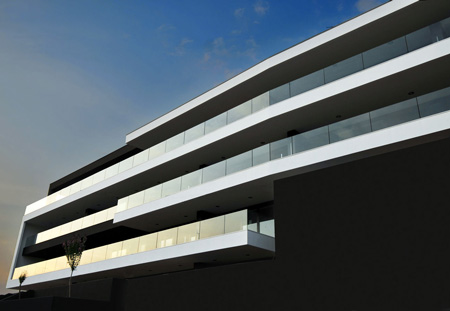
The complex characteristics of the site required a comprehensive and functional solution, taking into account the slope of the lot. The resulting building is composed of superimposed layers, developed longitudinally.
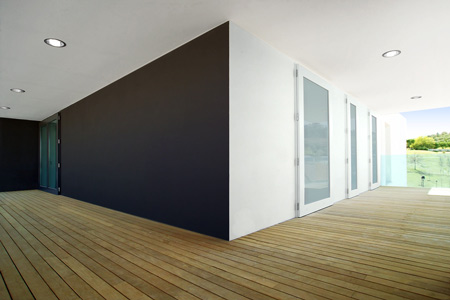
Each ‘layer’ has a specific designated use: the first level is reserved for parking, the second level contains more parking in addition to outside living space, and the remaining levels are dedicated to the 28 residential units.

A system of ramps and pedestrian walkways unifies the structure and provides pedestrian and vehicular access to all levels.
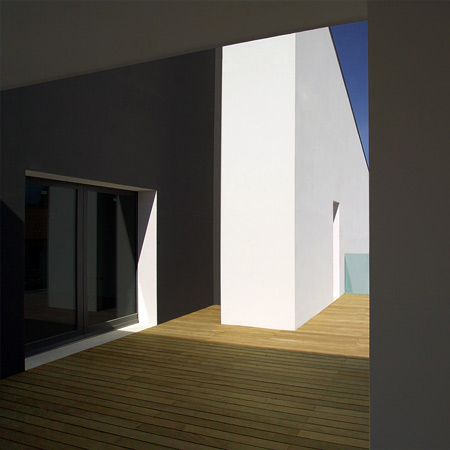
The elevation integrates with the surrounding area while maintaining a strong architectural identity.
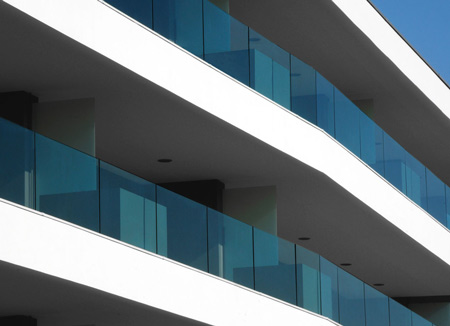
Wide balconies run the entire length of the building to emphasize the horizontal progression of the structure while providing access to the rear residential units.

As a play on depth, two bands enclose the structure in a unique graphic gesture, providing order to an otherwise fragmentary façade and serving as the identifying symbol of the building.
